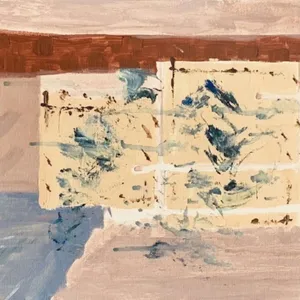Notes for episodes 7 and 8
American College and University Campus
In episodes 7 and 8, we look at the history of the American college and university campus from the commencement of British American settlement through modern times. The open and public spaces of campuses, as well as the design of buildings and overall layouts, reflect societal trends, philosophies, and prejudices as much as the changing purpose of higher education itself. We explore starting with the first colleges, their charters and founding as institutions meant to educate upper class white men through the post World War II period that has seen a democratization of higher education.
Our moments in equity for these two episodes look at how college establishment and funding were intimately connected to the slave trade, slave labor, and the profits from the sale of slaves in the British colonies and in the pre-Civil War United States.
Resources
Paul Venable Turner, Campus: An American planning tradition (MIT Press 1987)
A History of Stanford, Stanford University (Undated) – https://www.stanford.edu/about/history/
College of William & Mary, Wikipedia (Updated Feb. 17, 2022) – https://en.wikipedia.org/wiki/College_of_William_%26_Mary
Royal Charter (Feb. 8, 1693) [posted on Internet Archive Wayback Machine (Updated Mar. 26, 2012) – https://web.archive.org/web/20120529035803/http://scdb.swem.wm.edu/wiki/index.php/Charter#Transcription_of_the_Royal_Charter]
History, Columbia University in the City of New York (Undated) – https://www.columbia.edu/content/history
Frederick Law Olmsted: College and School Campuses, National Park Service (undated) – https://www.nps.gov/frla/learn/historyculture/college-campuses.htm
Judith Schiff, Resources on Yale History: A Brief History of Yale, Yale University Library (Updated June 22, 2021) – https://guides.library.yale.edu/yalehistory
Rebecca Woodham, David J. Trowbridge, and Clio Admin, Nott Memorial, Union College, Clio: Your Guide to History (August 1, 2021, accessed Mar. 15, 2022) – https://theclio.com/entry/6225
Benjamin Henry Latrobe (1764-1820), Dickinson College Archives & Special Collections (2005) – https://archives.dickinson.edu/people/benjamin-henry-latrobe-1764-1820
Benjamin Henry Latrobe, Wikipedia (Updated Nov. 23, 2021) – https://en.wikipedia.org/wiki/Benjamin_Henry_Latrobe
Lisa Chase, Imagining Utopia: Landscape Design at Smith College, 1871-1910, 65 New England Quarterly no. 4, p. 560 (Dec. 1992) – https://garden.smith.edu/sites/garden/files/imagining-utopia-lisa-chase.pdf
Jim McCarthy, Spotlight on…Gallaudet University, National Association for Olmsted Parks (Mar. 14, 2022) – https://olmsted200.org/spotlight-on-gallaudet-university/
Rebecca Beatrice Brooks, History of Cambridge, Massachusetts, History of Massachusetts Blog (May 30, 2021) – https://historyofmassachusetts.org/cambridge-ma-history/
Brief History of Cambridge, Mass., Cambridge Historical Commission (undated) – https://www.cambridgema.gov/historic/cambridgehistory
Harvard Square is famous for a lot of things, History, Harvard Square Business Association – https://www.harvardsquare.com/history/
John Harvard (clergyman), Wikipedia (Updated July 28, 2022) – https://en.wikipedia.org/wiki/John_Harvard_(clergyman)
Michael Johnson, 94 University Place: Old Mill, Burlington 1830 (Undated) – https://www.uvm.edu/histpres/HPJ/burl1830/streets/university/oldmill.html
Prof. Thomas Visser, Old Mill, University of Vermont (Undated; based on a professional report on the history of Old Mill prepared in 1988 by Thomas Visser and MaryJo Llewellyn of the UVM Historic Preservation Program's Architectural Conservation and Education Service.) – https://www.uvm.edu/~campus/oldmill/oldmillhistory.html
Vassar College, Wikipedia (Updated July 5, 2022) – https://en.wikipedia.org/wiki/Vassar_College#History
Historic Horseshoe, South Carolina, University History, University of South Carolina (Undated) – https://www.sc.edu/about/our_history/university_history/historic_horseshoe/index.php
Lydia Brandt, University of Virginia, Architecture of the, Encyclopedia Virginia (Dec. 14, 2020) – https://encyclopediavirginia.org/entries/university-of-virginia-the-architecture-of-the/
History and Traditions, Washington University in St. Louis (Undated) – https://wustl.edu/about/history-traditions/#:~:text=In%201853%2C%20prominent%20St.,of%20immigrants%20flooded%20into%20St.
Smith College, Wikipedia (Updated Aug. 4, 2022) – https://en.wikipedia.org/wiki/Smith_College
Smith History, Smith College (Undated) – https://www.smith.edu/about-smith/smith-history
Moments in Equity
Stephen Smith and Kate Ellis, Shackled Legacy – History shows slavery helped build many U.S. colleges and universities, American Public Media Reports (Sept. 4, 2017) – https://www.apmreports.org/episode/2017/09/04/shackled-legacy
Yoruhu Williams, Why Thomas Jefferson’s Anti-Slavery Passage Was Removed from the Declaration of Independence, History.com (June 29, 2020) –













